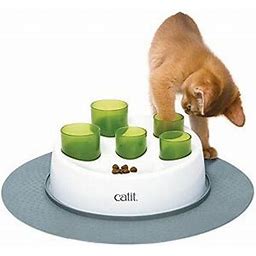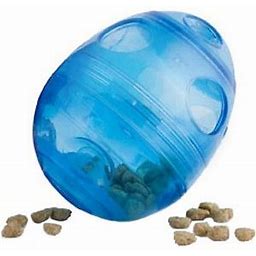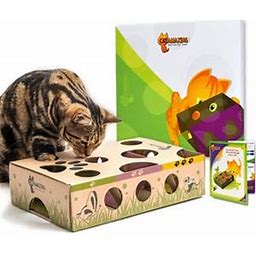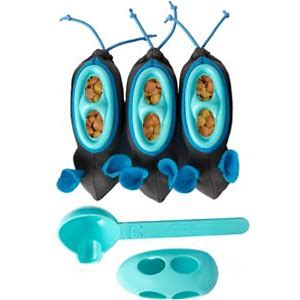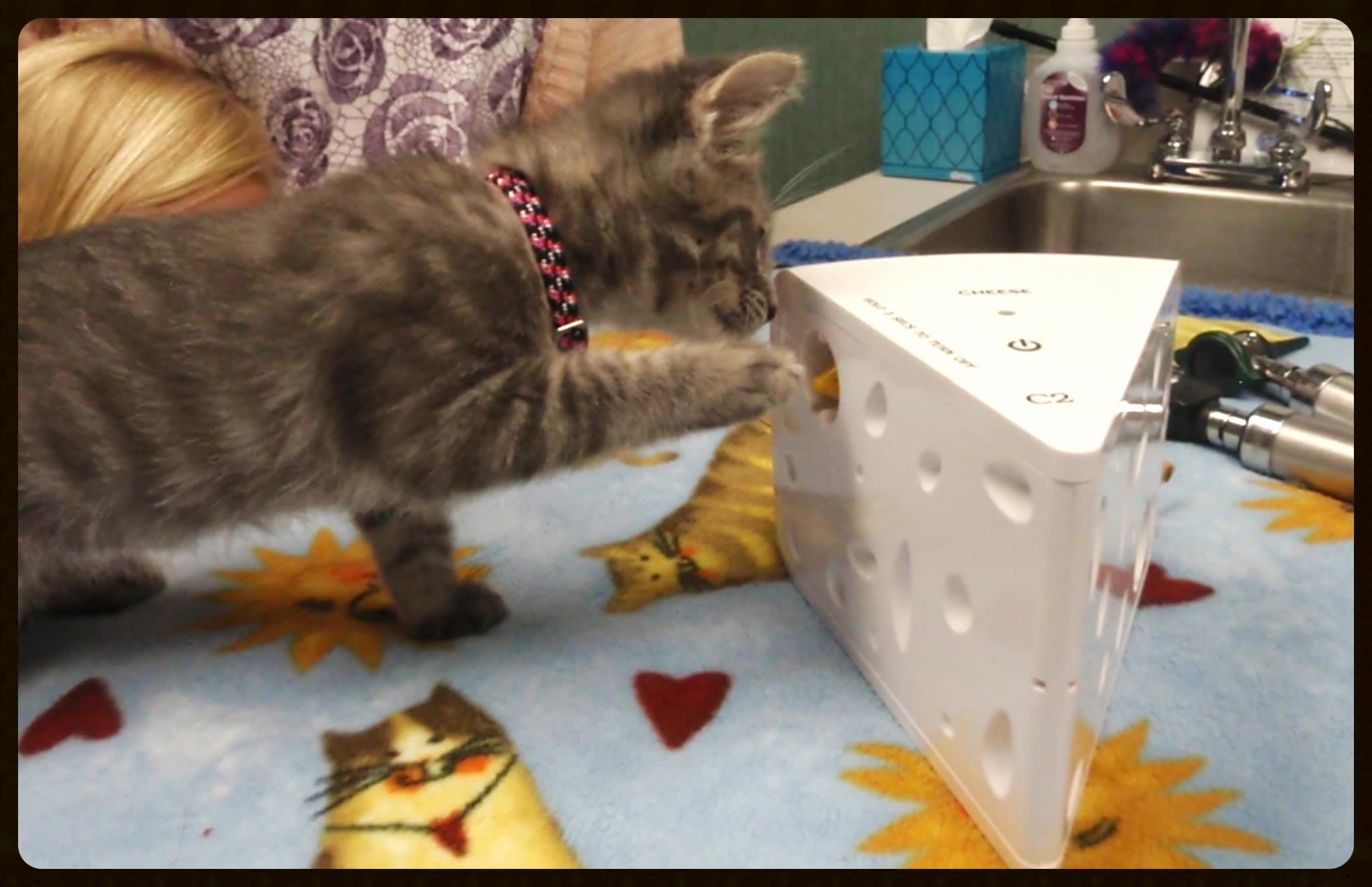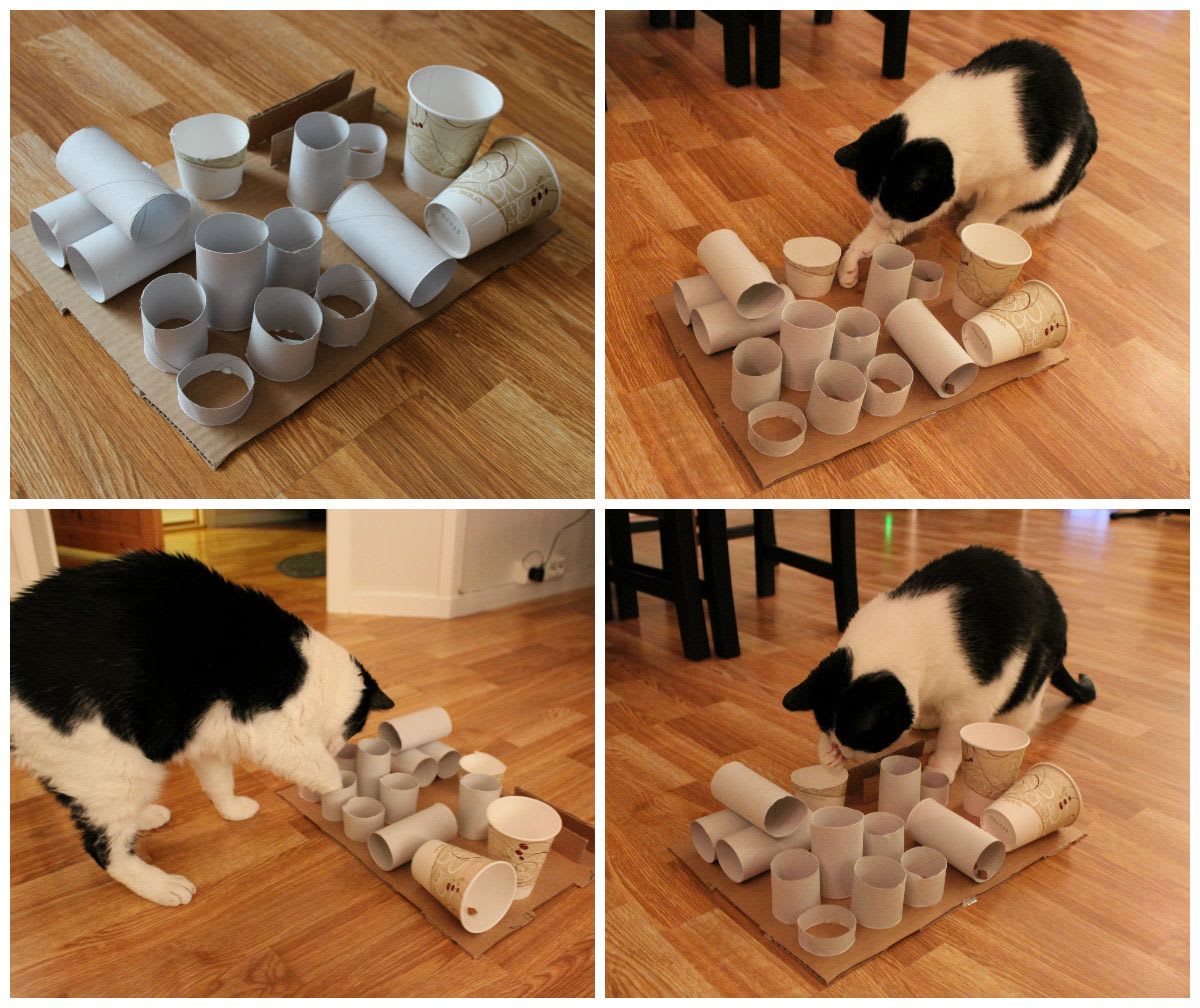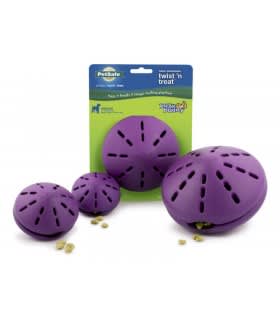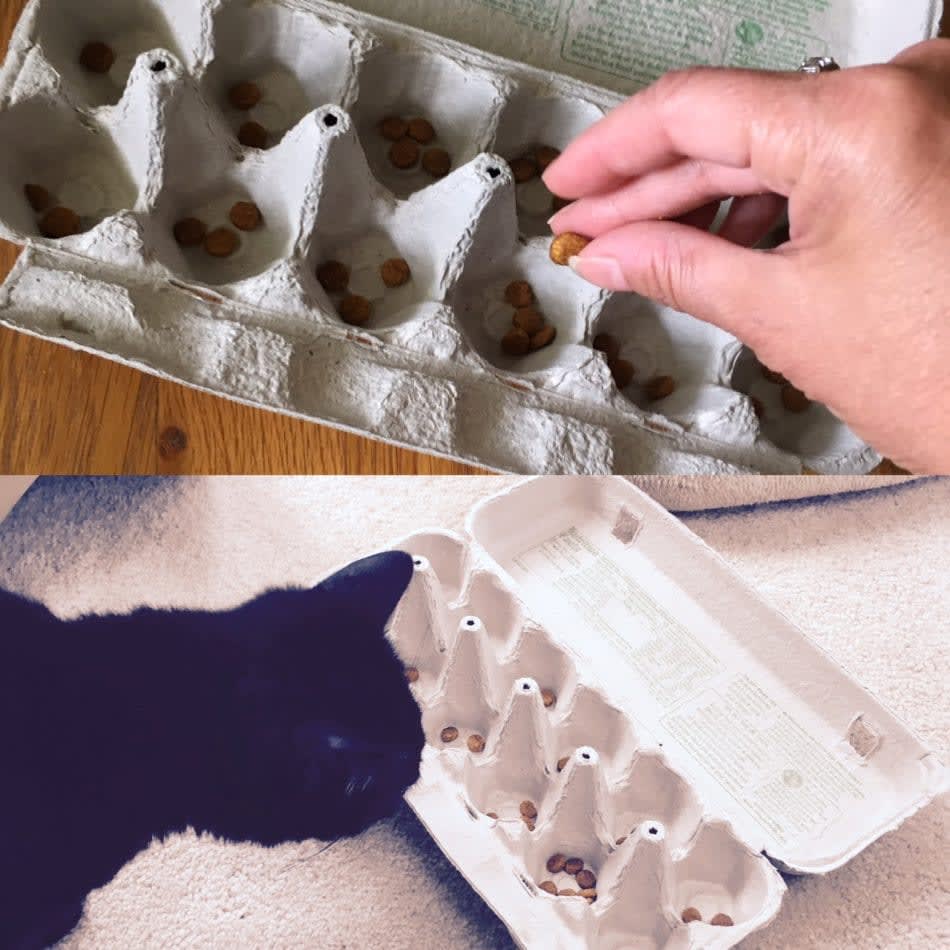
Play is an important part of kitten development, it fosters a special bond between you and your kitten while helping meet their exercise and enrichment needs. Learn how to choose the right toys for your kitten.
Kitten proof your house before you bring them home. Secure all electrical and blind cords, pick up anything with strings or small parts. Place objects that can be knocked over easily and harm your kitten up and out of the way. Make sure doors and window screens are secure and cannot be easily pushed open for an easy escape. Instead, offer kitten appropriate toys and outlets for play. You are bringing a new baby home and they can get themselves into trouble or cause mischief.
Play is an important part of kitten development, it fosters a special bond between you and your kitten while helping meet their exercise and enrichment needs. To avoid bad habits and injury, play should be with toys rather than with your feet and hands. Never encourage a kitten nipping at your feet or hands, it can cause a life long bad habit. Never scold your kitten rather offer another toy as means of play instead of your body parts. Play is not only for kittens; all cats can benefit from playtime.
Predatory Behavior and Play
Predatory play behavior is an integral part of kitten play. Cats are natural-born hunters. They need to stalk and hunt. By understanding this, we can provide safe outlets for them to do so, especially for our indoor cats. Most cats prefer to hunt specific creatures or “prey”. By choosing toys that resemble their prey preferences, it cuts down on boredom and enriches their daily life.
Prey preference usually falls into one of three general categories: “Bug”, “Mouse”, or “Bird”.
“Bug” toys are small and move rapidly. Cats like the jerky movement of catching the bugs. Laser pointers, tossing kibble across the floor and even strings with a knot tied in the end pulled across the floor can imitate a bug’s movement. Toys such as the Cat Dancer, cat spring toys resembles the movement of bugs.
When playing with a laser pointer there are a few things you want to remember; do not shine the laser in your cat's eyes and let the cat catch the "dot". Let your cat hunt, stalk, and chase the "dot". End the game with the "dot" landing on a piece of kibble or treat. This allows them to stalk, chase, and capture their prey. Some cats will become obsessed with looking for the "red dot" if they are not allowed to catch it. We want to keep it fun for your cat.
“Bird” toys use feathers and shapes that resemble birds. Many of these toys are attached to a string so they can be made to flutter and fly through the air for the cats to chase, jump and stalk. “Bird” toys can also make chirping sounds to attract the cat’s attention. Peacock feathers and fishing pole type toys fall into this category. "Da Bird" a feline favorite bird-like toy.
“Mouse” toys are balls, fur-covered, or stuffed toys that are played with on the ground rather than in the air. Some of these toys squeak. Some cats prefer to catch, bite, or carry their prey. Catnip and homemade toys can be fun and exciting for a cat.
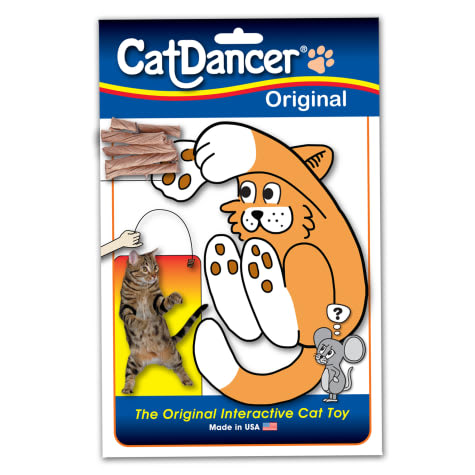
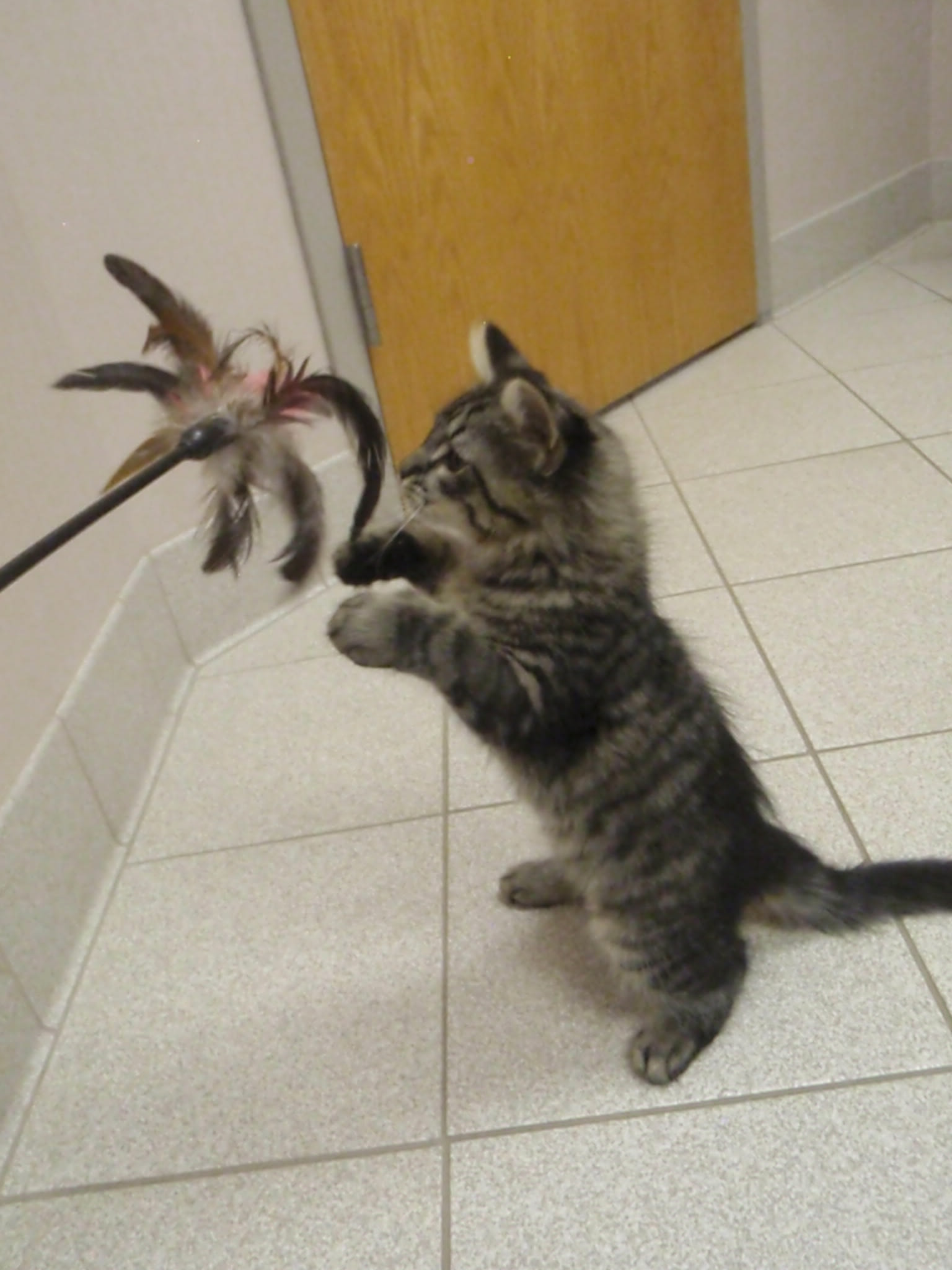
Be An Active Part Of Play
It is always a good idea to try different types of toys to see which "prey" preference your cat has. Try different sizes, shapes, and textures. Make the toys move in different ways to that mimics different types of critter movements. Crumpled pieces of paper, a paper bag, a ping pong ball, and even boxes add adventures along with being an outlet to chase, explore, and play.
Watch your cat for what seems to catch their attention at home. Do they sit at the window and watch the birds? Do they perk up when there is a squirrel or chipmunk on the ground or do they chase the bug along with the window? Buy a few toys in each of the categories to see what type of toys they are interested in but avoid buying too many so they aren’t easily distracted. Always consider safety when choosing toys. Make sure no parts or string can be chewed or swallowed.
When playing with your cat, be an active part of the play session. Try to mimic prey. Change movement; some cats like their prey jittery and jerky while others like smooth movements. Don’t use large toys that can be seen as an opponent rather use smaller toys that can be seen as prey. Don’t have toys attack the cat- prey always runs from the predator. Let your cat capture the prey. Rotate through the cat toys. Hide the ones that are not currently being used. This keeps things “new” for your cat.
Make time to play with your cat at least 8-15 minutes every day. Start slow with your overweight cat and work to longer play periods. Be sensitive to their age and mobility. Most important is to have fun and enjoy your time with your cat.
FELINE INTERACTIVE AND FOOD DISPENSING TOYS
Puzzle toys are another great way to add enrichment to your cat's life. It is also fun for you too! Start by making it easy and highly rewarding. Let them "win" every time by praising or giving them a treat when they interact with the toys, slowly add in difficulty. Once your cat starts to figure out how puzzle toys work, it will be fun to watch how they will use they approach the next puzzle toy. Here are a couple great examples of puzzle toys.

